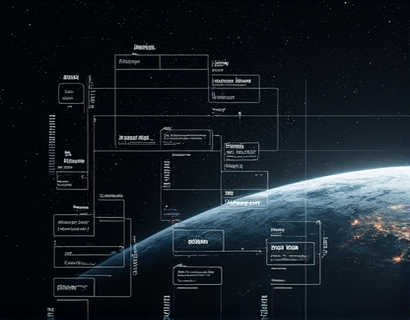Maximizing Management Efficiency: A Comprehensive Dashboard for Leaders
In the fast-paced world of business and organizational management, the ability to efficiently oversee diverse teams is crucial for success. Leaders face the constant challenge of managing multiple projects, monitoring team performance, and ensuring seamless communication across various departments. To address these challenges, a cutting-edge dashboard has been developed, designed to streamline management tasks, enhance communication, and drive productivity. This comprehensive tool is tailored for business leaders and organizational managers who aim to optimize their processes and achieve excellence in team administration.
Understanding the Need for a Comprehensive Dashboard
The modern workplace is characterized by diversity and complexity. Teams often span multiple locations, time zones, and cultural backgrounds, making traditional management approaches less effective. A comprehensive dashboard addresses these issues by providing a centralized platform where leaders can monitor key performance indicators (KPIs), track project progress, and manage resources more efficiently. This tool empowers leaders to make informed decisions quickly, fostering an environment of transparency and accountability.
Key Features of the Dashboard
The dashboard is equipped with a suite of features designed to enhance management efficiency:
- Real-time Monitoring: Leaders can track the progress of multiple projects and tasks in real-time, receiving instant updates on team performance and identifying potential bottlenecks.
- Customizable Dashboards: Each leader can tailor the dashboard to their specific needs, selecting the KPIs and metrics that are most relevant to their team and organization.
- Advanced Reporting: The dashboard generates detailed reports that provide insights into team productivity, resource utilization, and project timelines. These reports help leaders identify trends and make data-driven decisions.
- Enhanced Communication: Integrated communication tools facilitate seamless interaction among team members, reducing the need for multiple email threads and meeting schedules. This feature ensures that everyone is on the same page, promoting collaboration and efficiency.
- Resource Management: The dashboard offers tools to manage and allocate resources effectively, ensuring that teams have the necessary tools and support to meet their goals.
Streamlining Operations
One of the primary benefits of using a comprehensive dashboard is the streamlining of operations. By centralizing data and processes, leaders can reduce the administrative burden and focus more on strategic initiatives. Here’s how the dashboard achieves this:
Firstly, the dashboard automates routine tasks such as data collection and reporting. This automation saves time and reduces the risk of human error, allowing leaders to concentrate on higher-value activities. Secondly, the centralized access to information eliminates the need for siloed departments, fostering a more cohesive and coordinated approach to project management. This integration ensures that all team members have access to the same information, reducing misunderstandings and improving collaboration.
Enhancing Communication
Effective communication is the backbone of any successful organization. The dashboard enhances communication in several ways:
First, it provides a unified platform for team communication, reducing the reliance on disparate tools and platforms. This consolidation ensures that all team members are using the same tools, minimizing confusion and ensuring that messages are received and acted upon promptly. Secondly, the dashboard includes features such as instant messaging, file sharing, and notification systems that keep everyone informed and engaged. These tools help break down barriers and foster a culture of open communication, which is essential for driving productivity and innovation.
Driving Productivity
The ultimate goal of a comprehensive dashboard is to drive productivity across the organization. By providing leaders with the tools and insights they need, the dashboard helps teams work more efficiently and effectively. Here are some ways the dashboard contributes to productivity gains:
First, real-time monitoring allows leaders to identify and address issues promptly. For example, if a project is falling behind schedule, the leader can quickly intervene and reallocate resources or adjust priorities. This proactive approach ensures that projects stay on track, reducing delays and increasing overall efficiency. Secondly, advanced reporting features provide deep insights into team performance, helping leaders identify areas for improvement and implement targeted interventions. These insights can lead to continuous improvement and higher productivity levels.
Additionally, the dashboard’s resource management tools ensure that teams have the necessary support to perform at their best. By optimizing resource allocation, leaders can prevent bottlenecks and ensure that projects have the resources they need to succeed. This optimization not only improves project outcomes but also enhances team morale and job satisfaction, further boosting productivity.
Case Studies and Success Stories
Several organizations have already seen significant benefits from implementing a comprehensive dashboard. For instance, a large multinational corporation used the dashboard to manage its global workforce more effectively. By centralizing project data and communication tools, the company reduced project completion times by 20% and improved team collaboration. Another example is a tech startup that leveraged the dashboard to streamline its agile development process. The startup reported a 30% increase in developer productivity and a significant reduction in miscommunication, leading to faster product releases and higher customer satisfaction.
Implementing the Dashboard
Implementing a comprehensive dashboard requires a strategic approach to ensure maximum benefits. Here are some steps organizations can follow:
- Assess Needs: Conduct a thorough assessment of your organization’s specific needs and challenges. Identify the key areas where the dashboard can provide the most value.
- Choose the Right Tool: Select a dashboard that aligns with your organization’s goals and is scalable to accommodate future growth. Consider factors such as ease of use, customization options, and integration with existing systems.
- Train Staff: Provide comprehensive training for all users to ensure they are comfortable using the dashboard. This training should cover both the technical aspects and best practices for maximizing the tool’s benefits.
- Monitor and Adjust: After implementation, continuously monitor the dashboard’s impact on your organization. Gather feedback from users and make adjustments as needed to optimize performance and user satisfaction.
Conclusion
A comprehensive dashboard is an invaluable tool for leaders looking to maximize management efficiency, enhance communication, and drive productivity. By centralizing data, streamlining operations, and providing actionable insights, the dashboard empowers leaders to make informed decisions and foster a high-performing workforce. As businesses continue to evolve and face new challenges, embracing such innovative solutions is essential for staying competitive and achieving long-term success.










































